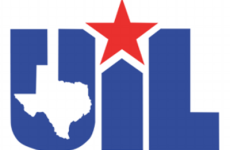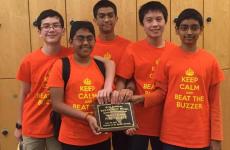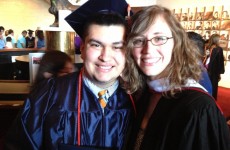The British School of Houston (BSH) offers an academic program based on the International Primary Curriculum, the National Curriculum for England and Wales, and the International Baccalaureate Diploma Program. Additionally, it is in the process of offering British A-Level courses by September 2014, which would make it one of the very few schools in the United States to do so. BSH is part of World Class Learning Schools, a division of the for-profit company World Class Learning Group.
All of BSH’s teachers are required to have teaching degrees from the United Kingdom. Students are introduced to both British English and American English at an early age utilizing educational material from America and Britain. The school is open to children of all nationalities. Approximately 60% of the student body is British, 7% American, and the remaining 33% come from countries such as The Netherlands, Oman, Australia, Singapore, and Egypt. The school also offers a special Dutch language program for young kids.
British School of Houston
4211 Watonga Blvd., Houston, TX 77092 Mr. Stephen Foxwell, Head of School
713-290-9025 Ms. Tami Riggs, Director of Admissions
www.BritishSchoolofHouston.org
Religious Affiliation
None.
Location and Facilities
The British School of Houston’s campus is located on 14 acres of land near the 610 Loop and I-290. It is bordered on the north by single-family homes, on the northeast by two churches, on the south and east by multi-family dwellings, and on the west by railroad tracks. The school is currently in the process of undertaking major renovations.
Admissions
BSH features an open enrollment policy, in which students may apply throughout the year and are admitted based upon openings in enrollment. However, students generally begin at the start of the academic year. Siblings of currently enrolled students are given priority but are not guaranteed enrollment. The admissions office also takes into consideration an even balance of the sexes within the classrooms, thus the minority sex may receive priority.
The admissions process consists of three steps: 1) Application 2) Assessment Visit and 3) Enrollment. The Application is composed of a) application and essay b) application fee c) school transcripts and d) teacher evaluations – Math and English for 6-12th grade. Following the receipt of the application, students are invited to meet with a member of the assessment team. If the school deems the application and assessment visit adequate, an offer of enrollment is made so long as space is available.
Academic Tracks and Curriculum
Students in the Early Years (ages 3 to 5) follow the Foundation Curriculum with a focus on six areas of education, such as social development and mathematical development. Students enrolled in the Primary School (ages 5 to 11) are instructed using the International Primary Curriculum and the National Curriculum of England, which includes a three to six week period of study on real-life interests. Middle School students (ages 11 to 14) follow the National Curriculum which structures twelve disciplines into a circular method of education. High School students continue to follow the National Curriculum by way of the International General Certificates of Secondary Education examinations, which act as a preparatory tool for the International Baccalaureate Diploma Program. In their final two years, students follow the curriculum designed by the IBDP, which includes CAS (Creativity, Action, and Service) hours.
In order to graduate, students are required to complete six subjects, three Higher Level and three Standard Level courses. These subjects include: first language, second language, math, science, social science, and an IB elective. Students must also complete 150 hours of CAS, a 4,000 word research essay, and a capstone course titled Theory of Knowledge.
Special Needs
No information provided about accommodations for students with learning differences such as ADHD, dysgraphia, or processing disorders. However, the British School of Houston prides itself on its differentiated instruction. According to their website, “BSH teachers tailor their instruction and adjust the curriculum to students’ needs rather than expecting students to modify themselves for the curriculum.”
Foreign Languages
Students attending BSH may study French and Spanish; however, additional languages may be available via remote-learning according to the IB program requirements.
Arts
BSH considers the fine arts an important part of the student’s education experience. BSH offers students the opportunity to participate in a number of musicals and dramas, school choirs, ballet, recorder and trumpet ensembles, and more. Performances are held throughout the academic year. As part of the curriculum, students are introduced to digital design and design technology.
Music receives special attention at BSH. Housed in a new building built in 2009, the Music Department has access to three teaching rooms and a large practice room where approximately 80 instrumental lessons take place per week. Music instruction begins at the Foundation level and, beginning with Year 5, the school encourages students to form their own bands. Major music performances include three winter concerts, an annual piano recital, and a rock concert.
Technology
No information provided.
Extracurricular Activities
BSH assigns each enrolling student to one of four Houses: Air, Earth, Wind, and Fire. Throughout the year, students are awarded House Points based on outstanding performance in all aspects of their education. Individually, House Points will earn students certificates, such as the Platinum House Certificate (150 points), while students also earn their assigned House points from House events. Students may participate in several Academic clubs (such as IB Chemistry Revision), the school newspaper (Students Extra!), and various opportunities for community service.
Athletics
BSH hosts seven sports programs in which students may participate, including several athletics clubs. The current sports programs are Rugby, Track & Field, Touch Rugby, Soccer, Netball, Golf, and Volleyball. The school’s mascot is the Bulldog and the sports teams have participated in the Texas Association of Private and Parochial Schools, Texas Youth Rugby Association, and Florida Netball Classic.
Parent Involvement
The BSH community comes together through the Parent-Teacher-Student Association (PTSA), which organizes and hosts various events. Students in years 7-13 can run for student council (2 spots per year and 2 leaders). The PTSA also reaches out to new families.
British School of Houston Fast Facts
| Overview | |
| School Type | International |
| Religious Affiliation | Non-Sectarian |
| Uniforms | Yes |
| Date Founded | 2000 |
| Endowment | None |
| Grades Served | Nursery-Year 13
(Preschool-12th) |
| Enrollment | 521 |
| Grade 12 | 21 |
| Grade 11 | 24 |
| Grade 10 | 45 |
| Grade 9 | 25 |
| Grade 8 | 51 |
| Grade 7 | 47 |
| Grade 6 | 48 |
| Grade 5 | 46 |
| Grade 4 | 45 |
| Grade 3 | 29 |
| Grade 2 | 29 |
| Grade 1 | 38 |
| Kindergarten | 33 |
| Pre-Kindergarten | 40 |
| Student to Teacher Ratio | 7:1 |
| Faculty with Advanced Degrees (#/%) | N/A |
| Minorities in Student Body | 27% |
| Curriculum | |
| Academic Tracks Offered | IB Diploma |
| International Baccalaureate Courses | N/A |
| Languages Offered | French, Spanish |
| Calendar (Semester / Trimester / Other) | Trimester |
| Interscholastic Sports Programs | 7 |
| Graduating Seniors | |
| National Merit Semi-Finalists (#/%) | 0 |
| Average SAT Scores (Class of 2010) | N/A |
| Mathematics | N/A |
| Critical Reading | N/A |
| Writing | N/A |
| % Students Admitted to 4 Year University | N/A |
| Admissions | |
| Prime Entry Points | All |
| Nursery (5 half days) | $10,980 |
| Nursery (Full-time) to Year 6 | $20,190 |
| Years 7-11 (6th-10th)
IB Program in Years 12-13 (11th-12th) |
$22,125
$23,175 |
| Exam Fees (Year 10-13) | $1,500 |
| New Student Fee | $2,200 |
| Enrollment Deposit (Refundable) | $1,000 |
| Students on Financial Aid | None |
Excerpted from General Academic’s publication, “Houston Private & Select Public Schools: Survey, Analysis, and Research, 3rd Edition.”


























Pingback: An Expat’s Guide to Houston’s International Schools
Pingback: An Expats Guide to Houston’s International Schools
Pingback: An Expats Intro to Houston’s International Schools